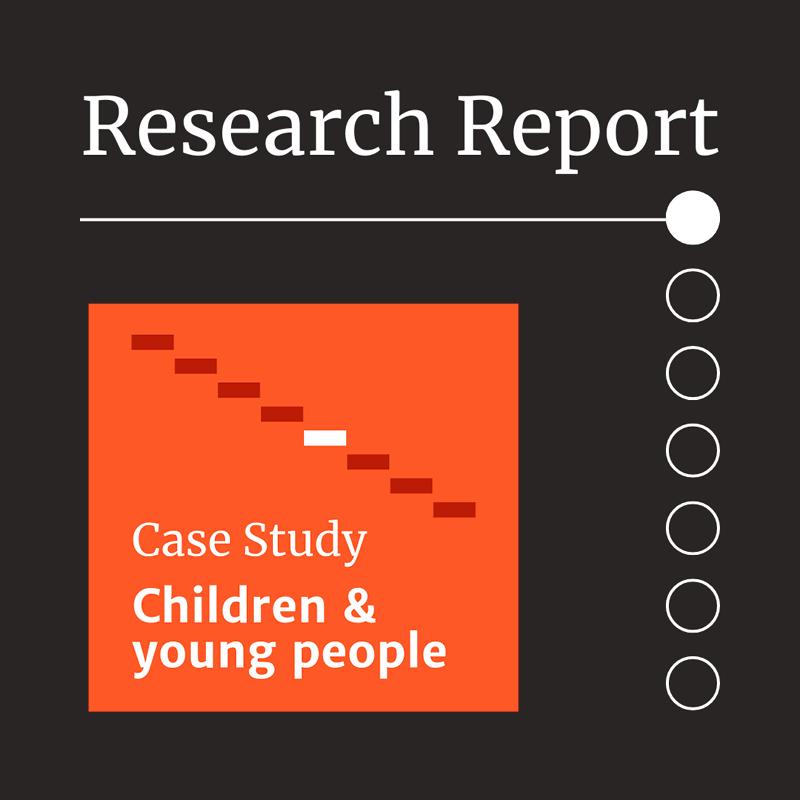Did we really consent to this? Terms and conditions & young people’s data

This report describes how young people experience the sign-up process and terms and conditions of some popular digital platforms. While they are easy to skip over, terms and conditions (T&Cs) are important because they outline what young people consent to when they join a service, especially around data collection and use. This report asks if T&Cs actually enable meaningful, informed consent about this data use and collection for young people aged 13-17.
It finds that ten of the most popular digital services accessed by Australia’s young people do not appear to present T&Cs in accessible ways that promote meaningful consent. The T&Cs are lengthy and complex, and do not adopt evidenced based approaches to maximising engagement nor understanding. Troublingly, they also seem to employ design techniques that actively nudge users to act against their own best interest (‘dark patterns’). Given the heavy investment in design, copy and user experience across every other aspect of these platforms and services, it’s hard not to be cynical about this.
It is no wonder young people in Australia overwhelmingly do not feel like they understand T&Cs. Working with YouGov, we polled 400 16 and 17 year olds and found only 7% of young people are confident they understood the terms and conditions they have ‘accepted’, and only 4% read them all the time. Their reasons for confusion and avoiding them were largely due to the documents themselves, such as the length of T&Cs, the sheer number of document pages they are presented across and disengaging layout.
This raises questions about the relationship between T&Cs and meaningful, informed consent. When most young people state they do not frequently read T&Cs, does this actually enable meaningful informed consent? When less than a third of young users say they understand T&Cs, have young people meaningfully consented to the ways their data is currently collected and used by digital platforms?
So what needs to happen? Terms & Conditions need to be presented in ways that enable children and young people to offer meaningful, informed consent about the collection and use of their data. Reset Tech Australia is calling for a data code for children and young people under 18-years-old, so that their data is only collected and processed in ways that are in their best interests. Deceptive data collection gathered under unclear T&Cs is not in children’s best interests.
A strong code that protects children’s data would create requirements for service providers to ensure data isn’t used without clear consent, so T&Cs would have to be easy to read and understand. A similar data code has already been passed in the UK, and is on its way in Ireland.
We think young Australians deserve the same, if not better, protections.
- Terms and Conditions are not accessible to young people who use these platforms
- Many T&Cs are not shown during sign up, which means young people have to actively hunt for them to find out what they’ve agreed to.
- 9 of 10 platforms require a Tertiary degree to understand them. Nine platforms presented their T&Cs at a ‘Tertiary Level’ reading age. Only one scored at a ‘Late high school’ reading age. All of these services allow 13 year olds to join.
- It takes 1 hour and 46 minutes to read the average T&Cs. TikTok’s clocked in at 5 hours and 25 minutes.
- Platforms do not present their Terms and Conditions in ways that could help improve understanding
- Platforms do not use the most effective techniques to promote understanding of T&Cs. Experimental research has demonstrated ‘what works’ in increasing understanding about T&Cs (for example, presenting them as Frequently Asked Questions or using graphics and icons). Of the five techniques investigated in this research, three techniques were not used consistently by any platform, with only or or two platforms using the other two proven techniques.
- 8 of the 10 platforms used dark patterns in their sign-up process, which nudge young people into accepting the T&Cs that may not be in their best interest. For example six platforms inferred consent when users click next, and six present ‘data maximising options’ as the best user experience.
- Terms and conditions are not widely understood by young people
- Only 4% of 16 and 17 year olds always read the T&Cs, 13% read them most of the time, 38% read them some of the time while 45% of young people never read T&Cs.
- Only 7% of 16 and 17 year olds are confident they understood everything they agreed to in the T&Cs, 21% are quite confident, 41% are only a little bit confident and 20% of young people say they don’t understand any of it. The other 10% don’t even know.
Platforms vary in their approach to terms and conditions, and the use of design principles and patterns. Analysing their use of language, good designs and dark patterns, we scored each platform out of 5 stars. Five stars would represent Terms and Conditions that were appropriate for a 13 year old to read, employ all the good design principles analysed and deploy no dark patterns. Zero would indicate long, age inappropriate T&Cs, that employ none of the good design principles analysed and deploy every dark pattern. Shockingly, the highest score was 2.5 stars out of 5, with two platforms scoring 0.